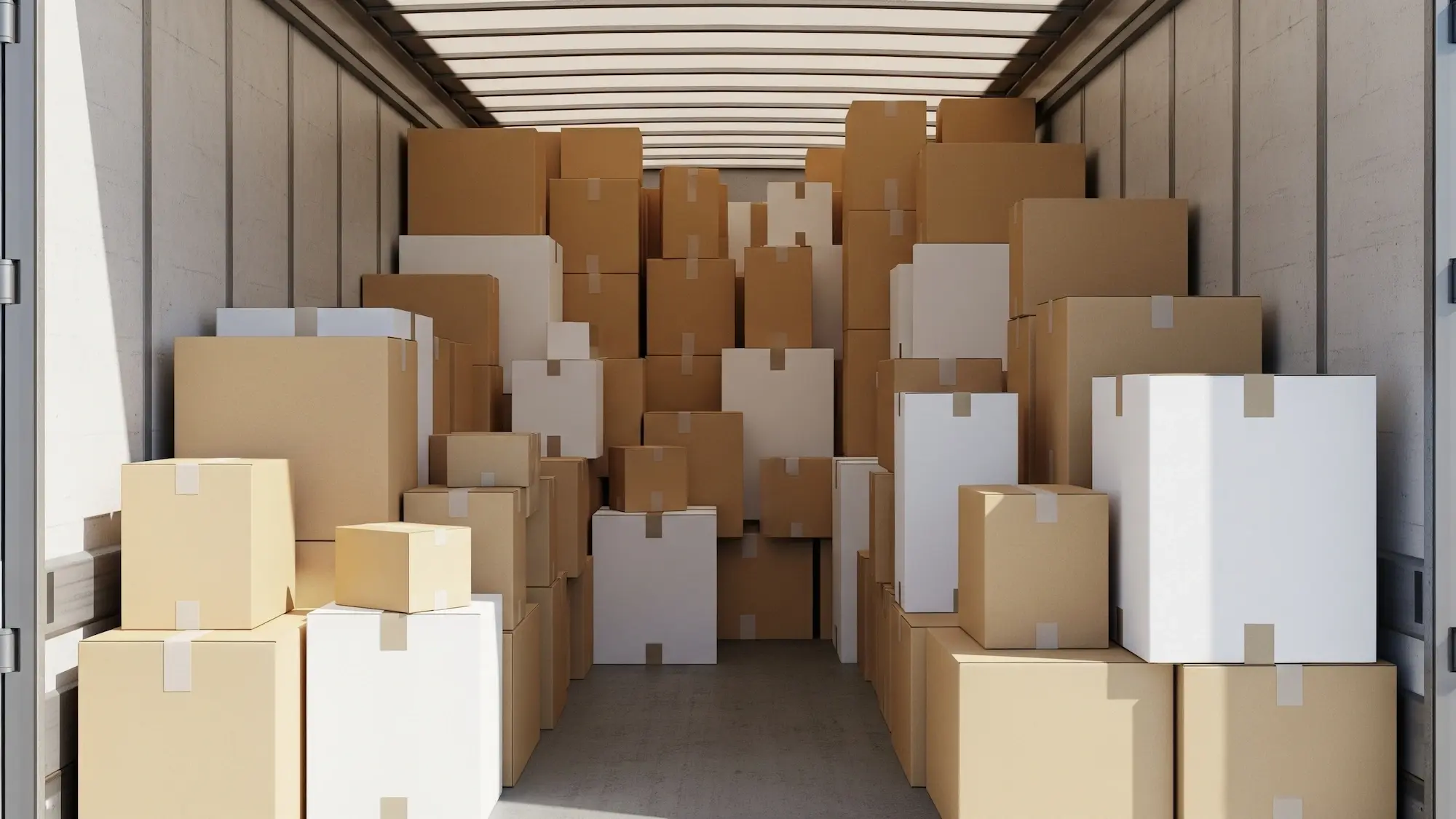
Customers (=We) are more demanding and connected than ever before. With just a few clicks, they expect to find exactly what they need, purchase it effortlessly, and receive it with speed and transparency. But are traditional logistics models keeping pace? The rise of omnichannel commerce and digital access has fundamentally reshaped how businesses interact with their customers, creating opportunities and introducing complexities for outbound logistics.
What does "omnichannel" truly mean in today's business landscape? It's more than selling through multiple channels like your website, physical stores, or online marketplaces. True omnichannel orchestrates a seamless, unified customer experience across all touchpoints. It's about providing your customers a consistent, delightful journey, regardless of where or how they choose to engage with your brand.
However, this seamless front-end experience demands an incredibly intricate and adaptable back-end. How do you efficiently manage large-scale outbound freight movements? How do you fulfill orders from diverse channels while maintaining consistency, controlling costs, and exceeding expectations? This is the core challenge.
The Omnichannel Imperative: More Than Just Multiple Channels
The shift in customer behavior is undeniable. They no longer see your online store, physical retail locations, or marketplace presence as separate entities. Instead, customers
-
Expect to move fluidly between them: buying a large item online and having it shipped directly from a distant distribution center, or purchasing in-store and arranging a specialized delivery service to their home.
-
Demand flexibility – options like "buy online, pick up in store," "ship from store," or direct-to-consumer delivery for even the bulkiest items.
-
Want it yesterday.
Businesses with strong omnichannel customer engagement strategies retain an average of 89% of their customers, compared to just 33% for companies with weak omnichannel engagement.
This isn't just a trend; it's a fundamental shift in how customers engage and how brands must respond. This means moving beyond simple, singular distribution models for outbound freight operations. It's no longer just about moving goods from one warehouse to another; it's about dynamic, interconnected flows that respond to an array of customer demands and retail trends.
The Unique Complexities of Outbound Logistics in an Omnichannel World
Navigating the omnichannel landscape introduces several intricate challenges for outbound logistics. What might seem like straightforward processes in a traditional model become significantly more complex when customer orders can originate from anywhere and demand fulfillment in myriad ways.
Diversifying Distribution
First, consider the diversified fulfillment models that are now required. Businesses can no longer rely solely on a single distribution center. They might utilize traditional distribution centers for bulk shipments. They also employ cross-docking for faster turnaround on specific orders, manage vendor drop-shipping for specialized products, or even convert retail stores into mini-fulfillment centers for local deliveries or larger item pickups.
Think of a furniture retailer: they might ship a full truckload of sofas to a new showroom from their main factory. They also facilitate direct home deliveries of single pieces purchased online, potentially from a regional warehouse or another store with excess stock. Each scenario demands a unique fulfillment strategy.
Visibility
Second, the challenge of inventory visibility and allocation becomes paramount. Do you have a real-time, accurate view of every product across all potential stock locations – multiple warehouses, distribution centers, goods in transit, and even store backrooms? Without this granular, up-to-the-minute perspective, businesses face significant hurdles.
Poor supply chain visibility can lead to costly misallocations, frustrating stockouts, inefficient freight optimization, and ultimately, lost sales and dissatisfied customers. Imagine promising a customer a delivery date based on perceived stock, only to find the item isn't where it's supposed to be.
Your Logistics Network
Third, logistics network optimization becomes a delicate balancing act. How do you balance the often-conflicting goals of speed, cost-efficiency, and service level across such a complex, fragmented network? This requires sophisticated strategies for flexible routing and carrier management. For instance, replenishing multiple retail store locations with general merchandise might be best handled by Less-than-Truckload (LTL) shipments, while moving vast quantities of seasonal inventory between major distribution hubs would necessitate Full Truckload (FTL) services. The ability to adapt your freight strategy to the specific demand of each channel is crucial.
Manage Your Data
Finally, the pervasive issue of data silos and integration gaps plagues many organizations. Enterprise Resource Planning (ERP) systems, Warehouse Management Systems (WMS), Transportation Management Systems (TMS), and e-commerce platforms often operate independently, leading to fractured information flow. This lack of seamless data integration results in discrepancies, reliance on manual processes, delays in order processing, inaccurate shipment tracking, and a fragmented view of the overall supply chain. Without a unified data backbone, achieving seamless omnichannel outbound logistics remains elusive.
Strategies for Orchestrating Seamless Omnichannel Outbound Logistics
So, how can your business navigate these complexities and turn them into a competitive advantage? The answer lies in leveraging digital tools and a holistic approach to outbound logistics:
Digital Freight Management
Implementing unified technology platforms is a foundational step. A robust, integrated technology stack is no longer a luxury; it's a necessity. A modern TMS, for instance, can serve as a central hub for all your outbound freight movements. It provides end-to-end supply chain visibility and control, regardless of the order's origin or final destination channel. This empowers intelligent routing, load optimization, and real-time decision-making, streamlining processes that were once fragmented and prone to error.
Flexibility
Secondly, embracing flexible fulfillment strategies is paramount. This involves implementing dynamic order routing rules that automatically select the optimal fulfillment location. These rules can be based on many factors, including inventory availability, the customer's proximity, the desired delivery speed, and the associated freight optimization costs. Concepts like "ship from anywhere" become powerful enablers, allowing you to fulfill an order from the nearest distribution center with available stock, or even leverage excess inventory from a specific store location for large items, reducing transit times and improving efficiency.
Strategic Partnerships
Third, cultivating strategic carrier partnerships is vital. You need more than just a single carrier; you need a diversified portfolio of partners. Work with carriers offering various services capable of handling freight types, sizes, and delivery requirements specific to your omnichannel operations. Strong relationships with these carriers allow for greater flexibility, capacity, and cost-effectiveness in managing your diverse outbound freight needs, from LTL to FTL and specialized services.
Visibility And Communication
Finally, and perhaps most crucially for the customer experience, is the commitment to proactive communication and visibility. In an age where tracking is expected, providing real-time tracking updates, accurate estimated delivery times, and proactive notifications about shipment milestones or potential delays builds immense trust. This transparency transforms the delivery experience from a passive wait into an informed, positive brand touchpoint. As highlighted in a previous blog, there is a correlation between shipping and customer satisfaction. The delivery experience profoundly shapes brand perception.
83% of customers expect regular communication about their orders, and 84% of consumers say a single bad delivery or return experience can push them away from a brand for good.
This implicitly suggests that the more visibility and transparency you offer your clients, the better it will be for you. One suggestion is to empower customers with self-service options, allowing them to keep themselves updated. This ability to significantly reduce inquiries will offer efficiency on your end and enhance satisfaction on theirs.
Beyond Delivery: The Customer Experience in Omnichannel Outbound
Viewing outbound logistics as a purely functional aspect of your business is easy. However, in the omnichannel world, every outbound shipment directly interacts with the customer, significantly shaping their perception of your brand. An efficient, transparent delivery process is crucial for building brand loyalty and trust.
The omnichannel promise of consistency extends directly to the delivery experience itself. Customers expect the same level of service, reliable information, and quality of delivery, regardless of whether they placed their order online, in a physical store, or through a third-party marketplace. This consistent experience is key to fostering customer satisfaction and encouraging repeat business. While our focus here is on outbound freight, it's important to remember that the post-purchase experience also includes aspects like returns management. A seamless returns process, though not outbound, reinforces the positive brand interaction and completes the customer's journey, making them more likely to choose you again.
Welcome the Digital Omnichannel Experience
The omnichannel age presents both formidable challenges and immense opportunities for outbound logistics. Navigating these complexities requires more than incremental adjustments; it demands a strategic, integrated approach, moving beyond fragmented operations to a unified freight management system.
Businesses that strategically invest in optimizing their outbound logistics for the omnichannel environment will gain a distinct competitive advantage. They won't just deliver products but consistently deliver exceptional customer experiences that drive brand loyalty and foster growth.
Are your current outbound freight strategies equipped for the omnichannel era's intricate demands? Businesses seeking to elevate their large-scale freight optimization and customer satisfaction in this complex landscape can benefit from specialized expertise. Customodal brings deep industry knowledge and innovative solutions to help businesses like yours navigate these complexities and achieve seamless omnichannel fulfillment. Investing in strategic logistics is not just about moving goods; it's about pioneering the future of logistics and ensuring supply chain innovation that sets you apart.





